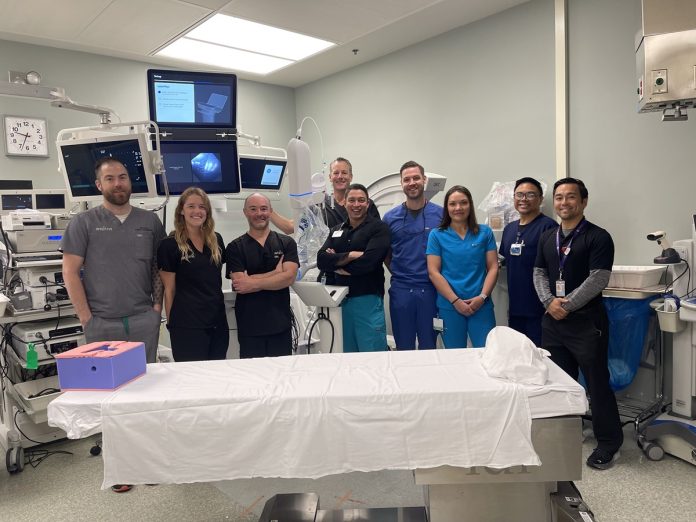
Submitted by Providence Swedish
Lung cancer is the leading cause of cancer death in the U.S. Each year, it claims more lives than breast, prostate and colon cancers combined. The good news is that early detection and treatment are extending and saving lives, thanks to the use of state-of-the-art Ion robot-assisted bronchoscopy technology and the lung nodule program, our dedicated multidisciplinary team at Providence St. Peter Hospital has been able to screen for early detection and support patients on their journey to recovery from lung cancer.
Further improving our ability to detect lung cancer in its earliest stages, recent integration of a new technology to the Ion robot, the GE mobile Cone Beam CT, allows for better targeting of early lung cancer nodules.
This advanced technology and program were made possible through generous donations to the Providence Foundation by donors with a long history of support for St. Peter Hospital, as well as donations from the pulmonologists leading the effort.
Now, two years after the Ion robot was installed at St. Peter, the team performed its 800th procedure.
“Early diagnosis combined with timely, targeted and personalized treatment is the key to improve lung cancer survival,” said Pulmonologist Dr. Dominique Pepper. “The Ion robot, integrated with the new Cone Beam CT, and our lung nodule program has allowed us to diagnose early-stage lung cancer so that patients can receive radiation, oncology, and thoracic surgery sooner.”
Early Detection is the Key for Lung Cancer Treatment
The scary thing about lung cancer is that it often does not have symptoms. Most patients find out they are victims of lung cancer when the disease is at an advanced stage.
According to the American Lung Association:
- Over the past five years, the 5-year survival rate has increased nationally to 26.6%.
- Only 4.5% of those at high risk were screened.
- Approximately 44% of those diagnosed already have stage 4 metastatic lung cancer with less than an 8% 5-year survival rate.
“Speed really matters in lung cancer treatment. We can now get patients who need it into surgery sooner, and we are now curing more lung cancers,” added Pepper.
Providence Swedish installed ION technology in October 2022 and the team at St. Peter has increased their success at diagnosing lung nodules from 50% in 2021 to 85% in 2023. Also significant – it has shortened the time from lung cancer diagnosis to treatment by 2 to 3 weeks.
“Following implementation of our program, 12-month survival from lung cancer increased from 68% to 80%. Now, we can dramatically increase the number of patients with very early-stage lung cancer to help improve their 5-year survival rate to 92%,” said Pepper. “This is a testament to our phenomenal team and improved benefit we can now provide our patients.”
Who Should Get Screened for Lung Cancer?
Under the new lung cancer screening guidelines, if you are between the ages of 50-80 and have a 20-pack-year smoking history or have quit smoking in the past 15 years, you should get screened for lung cancer annually.
For more information about lung cancer screening, or to request a screening, visit the Providence Swedish website.
Providence St. Peter Hospital’s dedicated pulmonology lung nodule clinic is located at 500 Lilly Road NE, Suite 204, Olympia. For more information, call 360.413.8272.
Sponsored
















































